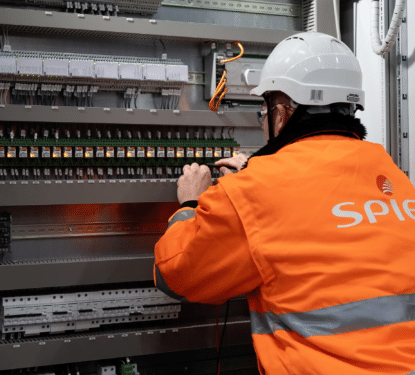“The information provided by a dedicated surveillance technology may not be sufficient to automatically identify the intrusions in a monitored environment [such as a smart building],” claims a new report published in the open access journal ‘Proceedings’ this month. The report - Towards Multimodal Surveillance for Smart Building Security - promotes the use of multiple forms of surveillance which, when brought together, can greatly improve the surveillance system as a whole.
“The main goal of a surveillance system is to collect information in a sensing environment and notify unexpected behavior. Information provided by single sensor and surveillance technology may not be sufficient to understand the whole context of the monitored environment. On the other hand, by combining information coming from different sources, the overall performance of a surveillance system can be improved,” write Amato et al. for the Institute of Information Science and Technologies, National Research Council of Italy.
The report describes a “Smart Building Suite” solution; a distributed smart surveillance system with the capabilities to notify real time alerts, to store and to analyze big amount of data coming from a large number of IP nodes. It addresses scalability and efficiency concerns by adopting an event-based communication where, “events are generated by peripheral smart subsystems that locally elaborate the raw data and feed the database only if something happens.”
The researchers setup a trial at a building in the CNR Research Area in Pisa. The system was made up of a network of wireless sensors installed inside offices, in addition to embedded smart cameras installed on the roof and at the building’s entrance, thereby providing indoor and outdoor surveillance. A wireless sensor network was also used to monitor energy consumption and reduce energy waste.
Raw sensor data and video streams are processed by two smart peripheral subsystems - the embedded smart cameras and the wireless sensor network - which are in charge to detect the events of interest and to communicate with the central server. Algorithms are used to run motion detection and tracking, face identification and re-identification, as well as virtual occupancy applications.
“As a future work we plan to integrate all the technologies described in the paper and to enhance the current surveillance system with a high-level reasoner that crosses all the selected information coming from smart cameras, the sensors and the face recognition system, in order to better determine whether or not a non-authorized access to the building has occurred and, in case, to raise a series of alarms, according to the severity of the intrusion,” the Italian researchers stated.

This new development closely follows predictions in our 2017 Physical Security report. We forecasted the Building Internet of Things (BIoT) to become a reality in the next 5 years as IP network cameras increasingly integrate into wider surveillance and security systems. The BIoT is much broader of course, integrating a variety of building systems to enhance one another while increasing the central intelligence with more data from more streams.
“It is our belief that in the next five years, IP network cameras will become a very important sensor in buildings, transport and smart cities,” our comprehensive market analysis outlined.
In a world of increasing criminality and with the emergence of terrorism, our buildings and occupants must adapt to new levels and forms of danger. The Smart Building Suite described in the paper takes surveillance to another level. A level where independent and different technologies are developed in order to realize this multimodal model.
In an era of new threats, smart buildings must offer new forms of physical security to better protect their occupants, now and in the future. Multimodal surveillance harnesses the power of the internet of things (IoT) by connecting a variety of sensor types into one centralized and intelligent system. This is a positive development in the continually evolving story of building security.
[contact-form-7 id="3204" title="memoori-newsletter"]



